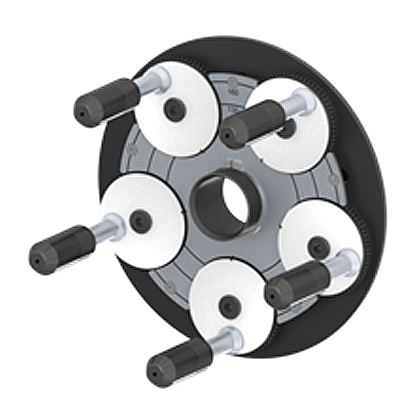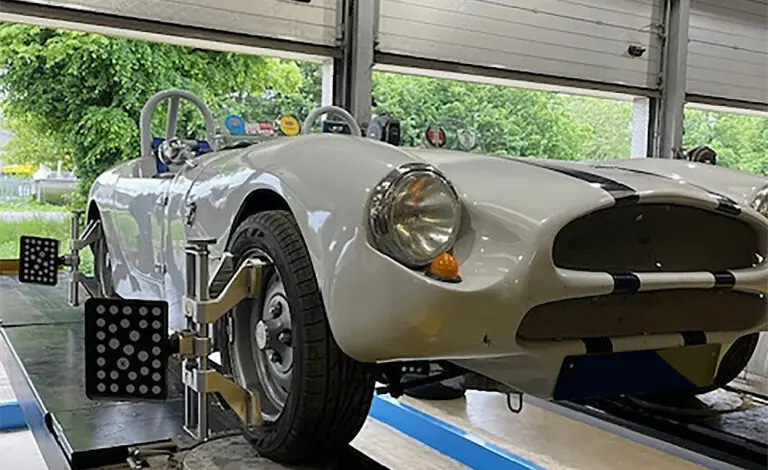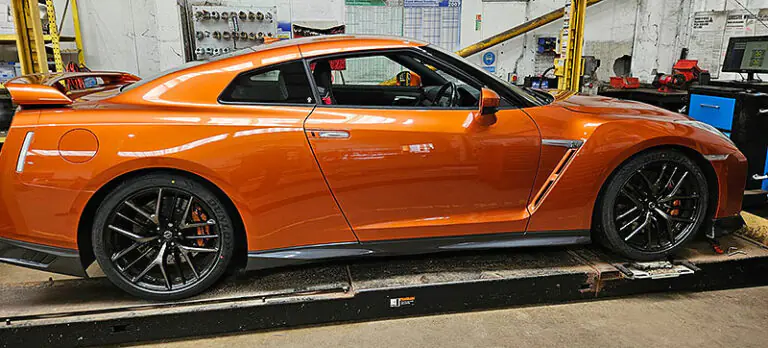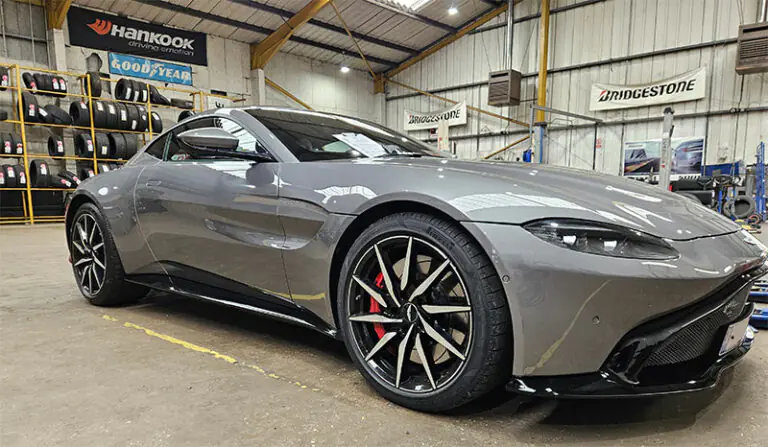Wheel Balancing on a Perfect Peugeot 205
Article written by Bush Tyres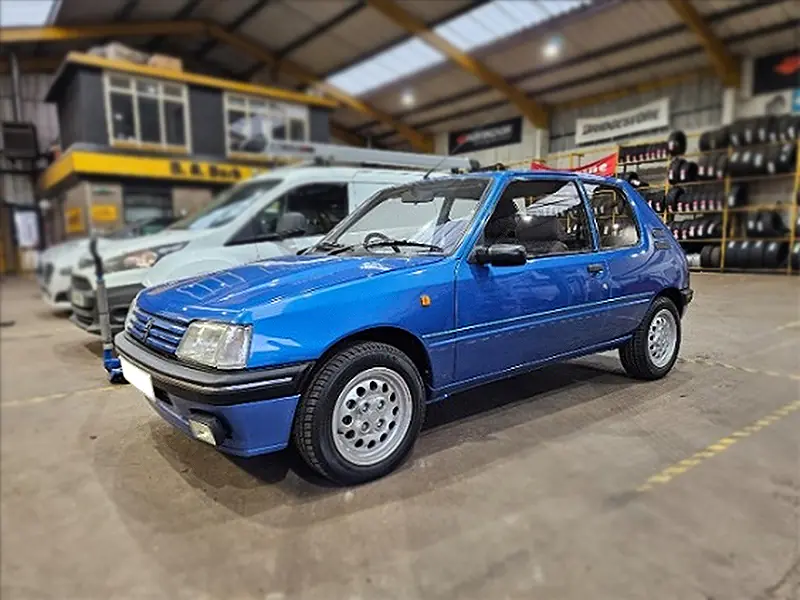
The Peugeot 205 and the art of Wheel Balancing
Fast becoming a collectable classic, the now iconic Peugeot 205 which is now celebrating its 40th birthday captured the world’s attention mainly with its desirable GTI variants in the 80s and 90s. This customer’s beautiful blue example is a rare automatic model, manufactured in 1995. This model has the standard 1.6 litre engine but when paired to an auto gearbox, in many ways this car is even rarer than the classic GTI.
Tragically, many of these model variants have been lost over the years through various scrappage schemes run by the government, and the inevitable onset of rust due to our salted winter roads.
This clean survivor is looking remarkably rust-free and has the very desirable “Pepperpot” Alloy wheels, more usually seen on the GTI models. Unique in their design is a feature that makes them impossible to balance on a conventional wheel balancing machine. For these wheels to be correctly balanced an adapter plate is required to mount the wheel correctly by the wheel bolts. This is the same way as the wheel is mounted to the car.
The adaptor plate not only allows the wheel to be balanced, but it also ensures more accurate balancing as it exactly replicates the mounting of the wheel on the car.
Our trained tyre technicians use this method for wheel balancing many centre-less wheels. Most often seen on French cars from the 80s and 90s but also on a few modern wheels too. If you have a car with a “centre-less-wheel” design, have your tyres fitted and balanced correctly at the same time in a single visit to Bush Tyres.
The importance of wheel balancing
Often mistaken by some as wheel alignment or tracking, incorrect wheel balancing mainly causes unwanted vibrations. Not only is this unpleasant for the driver but left uncorrected these vibrations can cause premature wear to your tyres, wheel bearings and suspension components.
If you have any unwanted vibrations, even if only at a certain speed. For example, it may present when you drive 30-35 mph but then “disappear” at 35-40mph. This can often be caused due to poorly balanced wheels. Issues like these should be checked as soon as possible. Our technicians will check your tyres for any uneven wear or damage. They will then visually check your suspension components for any signs of damage or wear. If nothing is found Wheel Balancing would then be carried out to fix any imbalance in your wheel and tyre assembly.
Firstly, the old weights would be removed, the wheel will then be rotated on the balancing machine to get accurate measurements of where to place the new weights. Even brand-new tyres can have minor imbalances from the factory. It is important to make sure your wheels are balanced at every tyre change, puncture repair, or whenever your wheels are moved from front to back, to avoid any unwanted vibrations.
Wheel Balancing helps prolong the life of your tyres and leads to safer driving. It can reduce the risk of an accident and help provide the smoothest ride possible, all while saving you money by improving your fuel economy too! Wheels should be rotated around your vehicle and balanced every 10k miles, as per the manufacturer’s recommendation.
The cost for wheel balancing depends on the type of wheel, and the style of balancing that is required. There are two main types of balance weight, “knock on” or “adhesive,” your local depot will be able to advise on all the options available to you for your specific wheels. Whichever Wheel Balancing option you choose the costs will be recovered in savings on fuel and importantly reduced tyre wear.
Wheel Balancing can be carried out at all our tyre depots as well as when using our mobile service. Should you have an unusual design or specialist wheel like these Peugeot centre-less wheels, we advise that you call ahead and make an enquiry directly with your local Bush Tyres branch.
To find the location of your nearest Bush Tyres branch and for their contact details please click on the button below.
FIND MY NEAREST BRANCH


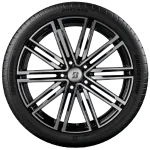 Tyres
Tyres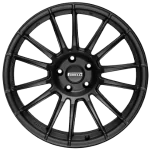 Services
Services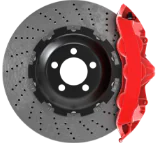 Fast Fit
Fast Fit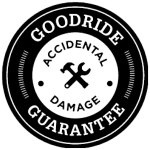 Offers
Offers